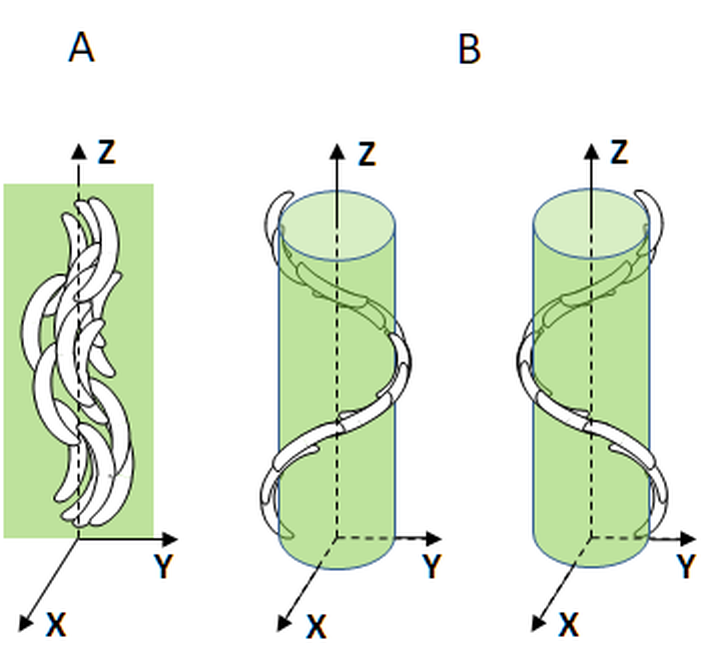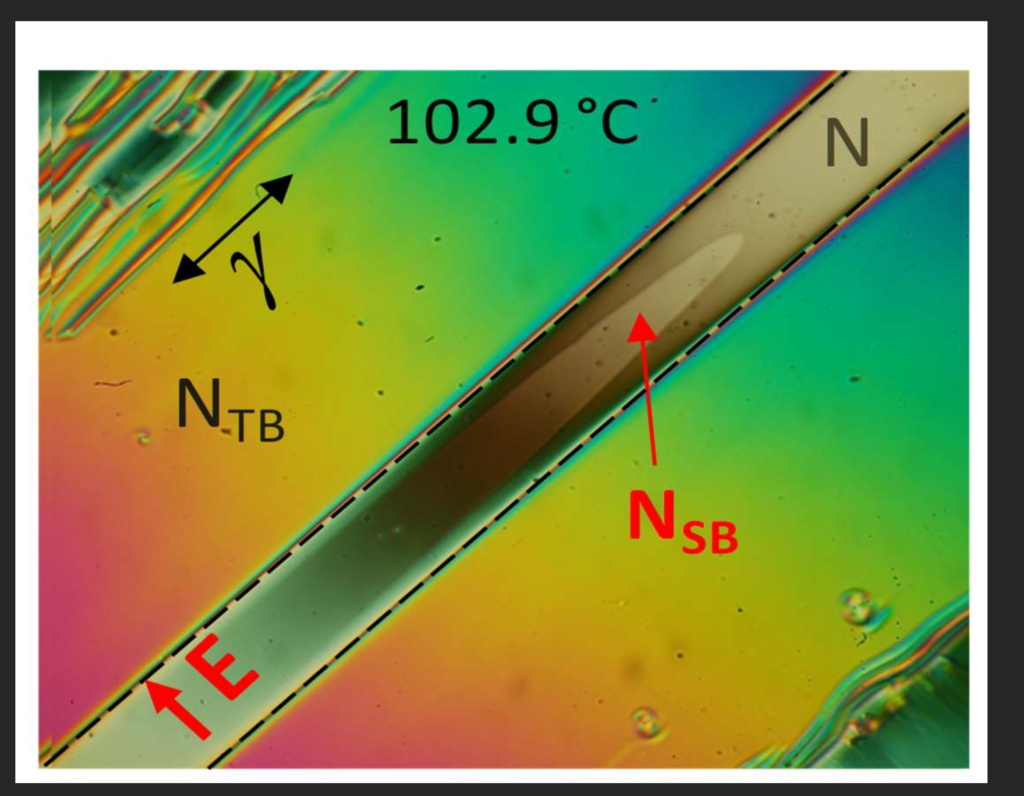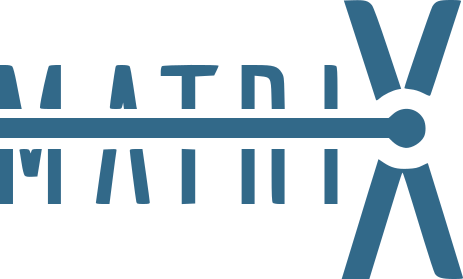The most common technology used nowadays in displays and screens is based on the properties of « nematic » liquid crystals. The existence of two new types of nematic liquid crystals was predicted twenty years ago for “banana”-shaped molecules. However, only one of these two types has been observed so far. A Franco-British team has just discovered the second.
The liquid crystals used in displays are most often mixtures of small rod-shaped molecules that spontaneously all align in the same direction. They are called “nematic” liquid crystals. Researchers worldwide have been very interested for several years in liquid-crystal molecules whose shapes are no longer cylindrical but banana-like. Indeed, a priori, such molecules can form two other types of nematic liquid crystals with modulated organizations which are more complicated than that of the simple nematic (Figure 1). In the first type, called “splay-bend” nematic (Figure 1a), the orientation of the main plane of the molecules remains fixed while the molecule oscillates along a line. In the second type, called “twist-bend” nematic, the molecule follows a left-handed or a right-handed helix (Figure 1b). Although the twist-bend nematic has now been observed on multiple occasions, the splay-bend nematic had never been detected so far.
By applying an electric field to a liquid-crystalline banana-shaped compound (CB7CB) which is emblematic of these new modulated nematics, a team of researchers from the Universities of Amiens, Paris-Saclay, Montpellier, and Southampton has recently managed to induce a transition from the twist-bend nematic to the splay-bend nematic (Figure 2). Indeed, investigations by polarized-light microscopy, varying the temperature and the intensity of the electric field applied to the CB7CB compound, have shown the appearance of a new nematic. Moreover, the measurement of the birefringence of this new phase has proved that it is the splay-bend nematic.

Figure 1: Schematic views of the structures of the modulated nematic phases formed by banana-shaped molecules. a) splay-bend nematic; b) twist-bend nematic. 
Figure 2: Observation in polarized-light microscopy of the CB7CB compound submitted to an electric field (E). The splay-bend nematic (NSB) grows within the common nematic (N) phase, in-between the two diagonal electrodes (dotted lines) used to apply the electric field. The twist-bend nematic (NTB) is observed outside the electrodes.
Reference
Biaxiality-driven twist-bend to splay-bend nematic phase transition induced by an electric field
Claire Meyer, Christophe Blanc, Geoffrey R. Luckhurst, Patrick Davidson & Ivan Dozov.
Sci. Adv. 2020, 6, eabb8212
doi:10.1126/sciadv.abb8212
Contacts
Ivan Dozov, Patrick Davidson
